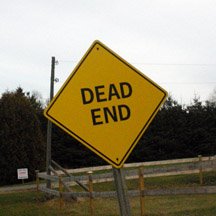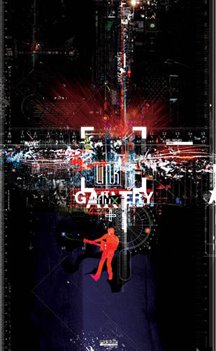 This is instantly a classic box and I've been waiting for WOMAN IN THE DUNES to come in a decent fully uncut version for a long time now. Also a brand new transfer courtesy of Criterion. The first time I saw Woman in The Dunes about 2 years ago, it had quite an impact on me. It's one of best examples of the psychological horror genre that Japan is known for. It's images and sounds will sty with you forever.
This is instantly a classic box and I've been waiting for WOMAN IN THE DUNES to come in a decent fully uncut version for a long time now. Also a brand new transfer courtesy of Criterion. The first time I saw Woman in The Dunes about 2 years ago, it had quite an impact on me. It's one of best examples of the psychological horror genre that Japan is known for. It's images and sounds will sty with you forever. These 3 films are a very unique and important collaboration between writer Abe Kobo, director Teshigahara Hiroshi and sound composer, Takemitsu Toru. They actually made four films together, and I have no idea why the 4th film wasn't part of this set, which is the only shortcoming I can point out with this box. The four films are PITFALL ((1962), WOMAN IN THE DUNES (1964), THE FACE OF ANOTHER (1966) and MAN WITHOUT A MAP (1968). The film that's missing from the set is the last one, MAN WITHOUT A MAP. These 4 films shook all conventions of Japanese film at the time.
These 3 films are a very unique and important collaboration between writer Abe Kobo, director Teshigahara Hiroshi and sound composer, Takemitsu Toru. They actually made four films together, and I have no idea why the 4th film wasn't part of this set, which is the only shortcoming I can point out with this box. The four films are PITFALL ((1962), WOMAN IN THE DUNES (1964), THE FACE OF ANOTHER (1966) and MAN WITHOUT A MAP (1968). The film that's missing from the set is the last one, MAN WITHOUT A MAP. These 4 films shook all conventions of Japanese film at the time.Even though Teshigahara is responsible for organizing these collaborations, one can't ignore that without Takemitsu's score and sound design and Kobo's writing, they wouldn't have been what they turned out to be. Takemitsu not only composed the music, but did all the sound design as well. Especially with WOMAN IN THE DUNES, Takemitsu gives life to the sand through sound. It's there at all times, even when the scene seems completely silent.
 Abe Kobo and Takemitsu Toru come from completely different backgrounds than Teshigahara, who's the most "Japanese" in heritage and upbringing. He is the son of Sofu Teshigahara, who's a very famous painter, sculptor, calligrapher and the founder of the the famous and highly innovative Sogetsu flower school.
Abe Kobo and Takemitsu Toru come from completely different backgrounds than Teshigahara, who's the most "Japanese" in heritage and upbringing. He is the son of Sofu Teshigahara, who's a very famous painter, sculptor, calligrapher and the founder of the the famous and highly innovative Sogetsu flower school.On the other hand, Takemitsu and Kobo experienced a great deal of freedom and self-confidence that was not experienced by most Japanese people, who grew up in tighter, socially constrained environments.
The 3 films in this box pose essential questions but provide few answers. Like mostly "Who am I?" "Why do I exist?" "What is our purpose in this world and society?" etc. etc. These are the issues that the main characters struggle with alone in these films.
 Like in the film FACE OF ANOTHER, the main character is introuced through an X-Ray image of his face. His identity is further called into question when we realize that his bandaged head is not his own face, but the mold of someone else's face grafted on. So then who is he? Does he really have an identity or does he just exist on paper? Can he get away with murder?
Like in the film FACE OF ANOTHER, the main character is introuced through an X-Ray image of his face. His identity is further called into question when we realize that his bandaged head is not his own face, but the mold of someone else's face grafted on. So then who is he? Does he really have an identity or does he just exist on paper? Can he get away with murder? In Pitfall, the main character is continually in flight from some unknown pursuers. Is he running from a crime or the memory of his crime? This film has a truly alien quality to it, especially with the man in the white suit, who drifts in and out of the shots. Pitfall seems to morph into or back out of a new movie every few minutes. The acting is purposefully functional, without a trace of emotion or mannerisms. They just go through the motions with heedless efficiency.
In Pitfall, the main character is continually in flight from some unknown pursuers. Is he running from a crime or the memory of his crime? This film has a truly alien quality to it, especially with the man in the white suit, who drifts in and out of the shots. Pitfall seems to morph into or back out of a new movie every few minutes. The acting is purposefully functional, without a trace of emotion or mannerisms. They just go through the motions with heedless efficiency.
Anyway, I'll keep this review short. Just watch the damn films, they are all classics and this is one of the best and most necessary boxsets Criterion has ever put out. My only complaint is the missing film. (?)











































No comments:
Post a Comment